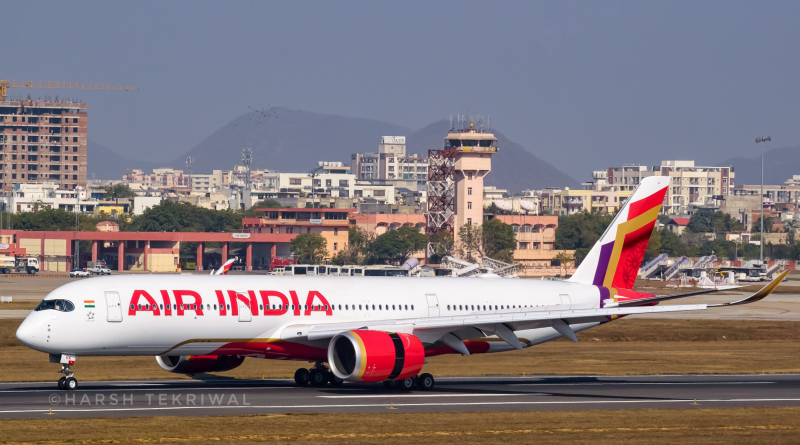Air India Transforms Bengaluru and Delhi Airports into Aviation Hubs
Reported by: Diksha Kaushik
Air India has announced plans to transform Bengaluru’s Kempegowda International Airport into a long-haul aviation hub for southern India. According to the arrangement, Tata Group airlines, which include Vistara and Air India Express, will partner with Bangalore International Airport Limited (BIAL) to improve the group’s existing aircraft network at the airport and build a domestic lounge. Indira Gandhi International Airport in New Delhi is now the main international hub in the country, serving major Indian airlines such as IndiGo and Air India.
AFTER THIS INITIATIVE, WHAT CHANGES WILL THERE BE?

The aviation hub at Bengaluru Airport, as well as increased international connections for South India, would operate on a hub-and-spoke model. In aviation, this concept is based on a central airport to which all traffic from spoke airports is routed. According to reports, the hub functions as a transition point for travelers flying to their final destination. “Airline-airport synergy is key to elevated customer experience and efficient operations, while Bengaluru is highly attractive as an origin and destination market as well as a connecting hub,” Campbell Wilson, Air India’s CEO and MD, said. As part of the plan, Air India and the Karnataka government have signed a Memorandum of Understanding (MoU) to develop Maintenance, Repair, and Overhaul (MRO) facilities at the airport. The MRO is estimated to create 1,200 new jobs for highly qualified professionals. Kempegowda International Airport Bengaluru served 37.2 million people in 2023 and handled 422,644 tons of cargo.
WHAT IS AN AVIATION HUB?

Flight operations and air traffic are what define the hub. An aviation hub’s airports serve as hubs for travelers to go to their ultimate destinations. According to a study, these hubs are also connected to one or two big airlines that offer direct service between key international destinations and one-stop service to tier-2 and tier-3 cities. The hub-and-spoke concept serves as their foundation for allocating aircraft traffic. An airport at the center of a flight path is called a “hub,” and the routes that depart from the hub airport are known as “spokes.” Major airlines often have several hubs. The hub-and-spoke system’s primary goals are cost savings for airlines and providing better routes for travelers to destinations.
According to aviation research firm OAG, London Heathrow will have the greatest global connectivity in 2023, ahead of JFK Airport in New York, Amsterdam Airport in the Netherlands, Kuala Lumpur Airport in Malaysia, and Haneda Airport in Tokyo. Dominating at least one airline is a crucial component in establishing a hub. For instance, British Airways controls half of all flights that originate at London Heathrow Airport at Heathrow Airport. At JKF airport, Delta Airlines holds a 34% stake, KLM-RoyalAirlinee holds a 53% share, and Air Asia holds a 34% share in flights departing from Kuala Lumpur. A minimum transit time between two routes, whether they are international to domestic or international to international, should also be provided by an airport hub. Dubai International Airport can handle 90 million passengers annually and features three main terminals with more than 50 gates. Transfer times between these terminals can be as long as 30 minutes.
The Center has been advocating for the country’s aviation hubs to allow one-stop international connectivity via India to foreign locations, which would increase air traffic as well as investment and trade. The largest and busiest airport in India, Delhi, which had 4,29,964 aircraft movements and 65.32 million passenger movements in 2022–2023 (April–March), has a strategy in place. A panel has been established by the government to identify Delhi Airport as an international hub by Dubai and Doha airports, according to the Center’s national aviation hub policy.
To facilitate smooth connectivity between local and foreign aircraft, the strategy would address issues including manageable security inspections and immigration backlog. The government would likely evaluate whether to impose separate fees for domestic and international airlines at the nation’s airports. This is by the proposed policy. To guarantee a smooth transfer experience, the Ministry of Civil Aviation and Delhi International Airport Limited (DIAL) are investigating methods to synchronize all agencies. One option would be to establish the US pre-clearance facility at Delhi’s IGI, which would allow travelers to enter the US as domestic travelers after passing through US immigration and customs in New Delhi.
Before passengers board planes to the United States, Customs and Border Protection (CBP) officers conduct inspections at specific international airports under the terms of the CBP Preclearance program. After arriving in the US, they skip the Transportation Security Administration (TSA) and Customs and Border Protection (CBP) examinations and head straight to their destination or connecting aircraft. Currently, there are fifteen Preclearance facilities spread across six nations: Canada’s Calgary, Toronto, Edmonton, Halifax, Montreal, Ottawa, Vancouver, Victoria, and Winnipeg; Aruba; Bermuda; Abu Dhabi in the United Arab Emirates; Nassau in the Bahamas; and Ireland’s Dublin and Shannon.



